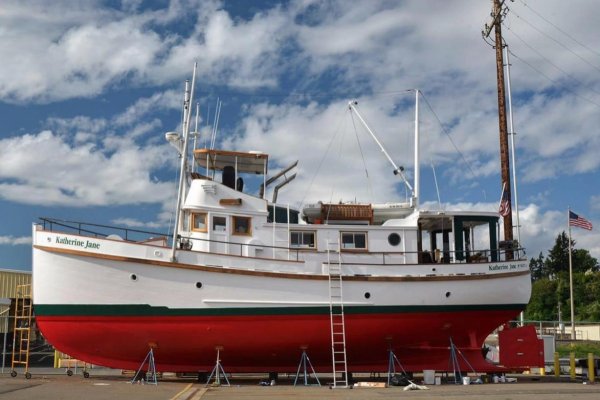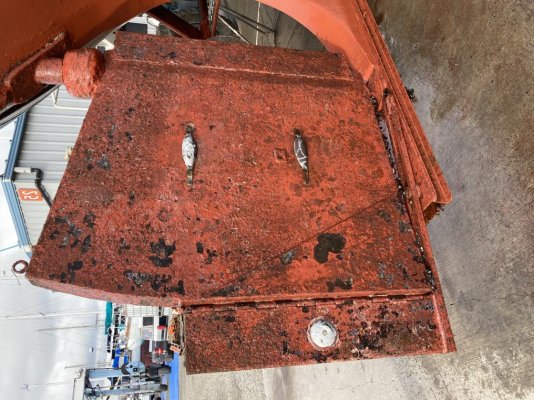Northern Spy
Guru
- Joined
- Feb 5, 2012
- Messages
- 4,075
- Location
- Canada
- Vessel Name
- Northern Spy
- Vessel Make
- Nordic Tug 26
kapnd posted a picture of the US Navy utility boat backing rudder earlier in this thread.


I appreciate that I am too new to operating a 37' single screw boat, but improved rudder response would sure provide more confidence when backing into my slip in wind. Assuming a stern thruster has the same impact as a bow rudder, that seems like a smart move. Assumptions being what they are, adding inches to the leading edge of the rudder seems like a smart move too.
To me, it looks like there is a lot more clearance between the leading edge of my rudder and the prop than I see in other pictures in this thread. What am I missing?
I added an angle to my trailing edge and there are no adverse effects at cruise but at slow, maneuvering speeds, huge difference.
Also, notice where the anode is welded? Much better than where it previously was, in the middle of the "blade." Much less vibration from wash.
You can't just add more rudder in front of the shaft. You have a balanced rudder. More in front would make the wheel want to go hard over from the prop wash. Having that piece in front makes turning the wheel easier. Adding too much will make the rudder want to go hard over on it's own.Assumptions being what they are, adding inches to the leading edge of the rudder seems like a smart move too.
Goosing the throttle does help, but I consider numerous shifting to be almost destructive to my Borg Warner.
.
I also have a single screw and have considered rudder modifications.
My approach of going very slow only compounds the problem of loss of steerage.
Goosing the throttle does help, but I consider numerous shifting to be almost destructive to my Borg Warner.
My background was yachts then offshore supply boats, each end of the spectrum. I use wind to my advantage along with crew speed and tactics.
Give it a little time. I watched a guy dock a single screw he had just bought into an incredibly tight spot. It was his first boat, and he had taken ownership that morning.
It’s reflexive to twist the wheel To the stops in the direction you want the boat to back, but my rudder actually bites better in reverse at about 25 - 30*, and improves when you get some momentum and can slip it back into neutral, then coast against the rudder.
The main thing is to learn how to utilize the peculiarities of your boat and use them to your advantage.
